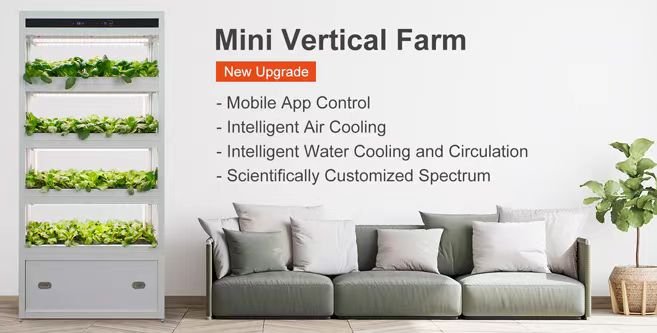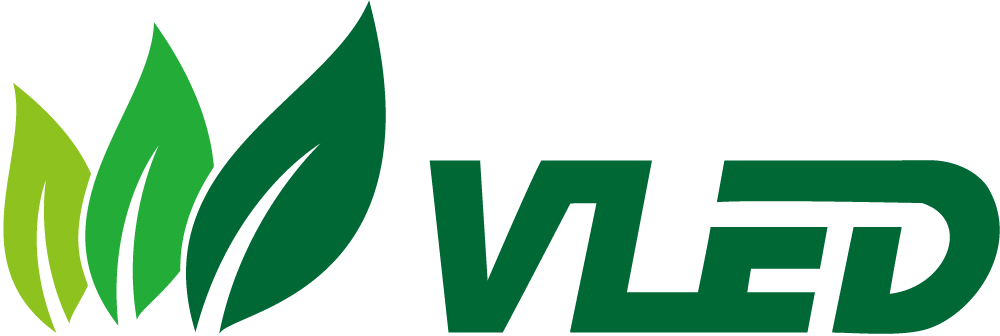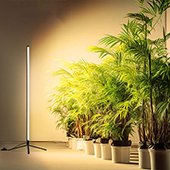Menu
How to Grow Spinach Hydroponically?
Keep reading to explore the wonders of hydroponic spinach – effortless convenience and impressive growth rates. Let’s embark on cultivating indoor spinach together!
Table of Contents
Advantages of Hydroponic Spinach
● Easy to clean and maintain, hydroponic spinach is not susceptible to pathogens and pests found in soil. It eliminates the need for frequent soil cultivation and watering, significantly reducing the frequency and time required for manual maintenance.
● Efficient growth: Hydroponic spinach primarily absorbs essential nutrients and water from nutrient solutions. According to research, hydroponically grown spinach indeed exhibits a faster growth rate compared to soil cultivation.
Comparison between Growing Plants in Hydroponic System and Soil Based System
● Suitable humidity levels are conducive to the growth of spinach. The humidity environment for hydroponic plants is relatively favorable, aiding in retaining moisture in the leaves and promoting spinach growth.
● Space-saving: Hydroponic containers are typically smaller, occupying less space.
● Recyclable: Hydroponic nutrient solutions can be recycled, reducing waste and conserving water resources.
Hydroponic Spinach Planting Steps
Planting Tools: Indoor Smart Garden
Hydroponic planting machines have gained popularity among many novice home gardeners because they can automatically control water and nutrient supply and lighting, requiring only periodic checks from users.
More importantly, they eliminate the tedious tasks associated with traditional soil cultivation, such as watering, fertilizing, and weeding.
Currently, there is a wide variety of Indoor Smart Garden available on the market. If you are interested, you can explore Auxgrow’s Indoor Smart Garden, including desktop planters, Vertical Growing Systems, and Enclosed Planting Cabinet, aiming to provide you with a more enriching hydroponic planting experience.

Nutrient Solution
If you are a beginner, it is recommended to use a comprehensive liquid nutrient solution. This type of nutrient solution is convenient to use, requiring no mixing, and can meet the growth needs of spinach.
However, it’s essential to pay attention to the concentration of the nutrient solution and select it based on the growth stage of spinach.
Hydroponic Spinach Planting Process
● Seed Preparation:
Obtain spinach seeds from a nursery or collect them from fresh spinach.
● Seed Disinfection:
Wash spinach seeds with clean water, soak them in room temperature water for 20 minutes, and then rinse them thoroughly with clean water.
● Sowing:
Place the seeds into seedling trays or hydroponic containers, sowing at a density of one seed per cavity. After sowing, cover with a thin layer of substrate and water thoroughly.
● Temperature and Moisture Control:
After sowing, place the seedling trays in a warm, well-ventilated area, maintaining a temperature between 20-25°C.
● Germination:
Spinach seeds typically germinate within 3-5 days. After germination, move the seedling trays to a well-lit area, providing 6-8 hours of light each day.
● Transplanting:
When spinach seedlings have grown 4-6 true leaves, they are ready for transplanting. Remove the seedlings from the trays and transplant them into your hydroponic system.
How Warm for Hydroponic Spinach?
Daytime:
Optimal: 65-70°F (18-21°C) – This temperature range promotes healthy growth and increases yield.
Tolerable: 55-75°F (13-24°C) – Spinach can withstand slightly lower or higher temperatures, but growth rates may slow.
Too High: Exceeding 24°C (24°C) – High temperatures stress spinach, leading to bolting (flowering) and reduced overall quality.
Nighttime:
Ideal Temperature: 55-65°F (13-18°C) – Lower nighttime temperatures help balance the daytime heat and promote leaf growth.
Tolerable: 50-60°F (10-16°C) – Slightly cooler nights are still acceptable but may slightly slow down growth.
Too Cold: Below 50°F (10°C) – Nighttime temperatures that are too low can damage spinach and impede its growth.
Overall, maintaining daytime temperatures within the range of 65-70°F (18-21°C) and nighttime temperatures within 55-65°F (13-18°C) will optimize the growth and quality of hydroponic spinach.
Other factors to consider:
Light Intensity: If your indoor environment lacks sufficient natural light, you may need to supplement it with artificial lighting. Higher light intensity tends to correlate with higher temperatures.
Nutrient Solution Temperature: Ideally, the nutrient solution temperature range should match the air temperature. Lower solution temperatures can slow nutrient absorption, while higher temperatures increase the risk of diseases.
Specific Spinach Varieties: Some varieties may be more tolerant of extreme temperatures than others.
Regular Water Replacement
As hydroponic spinach doesn’t rely on soil, it’s essential to periodically change the water to maintain cleanliness. Typically, water should be replaced every 2-3 days.
This practice not only ensures the cleanliness of the water but also benefits the overall growth of spinach.
How Fast Does Spinach Grow Hydroponics?
The growth rate of hydroponic spinach is much faster than that of soil-cultivated spinach, with most varieties ready for harvest within 35-50 days after seeding.
Fastest: Under optimal conditions, some fast-maturing varieties can be harvested in as little as 35 days in a well-managed hydroponic system.
Average: In favorable conditions, the majority of varieties typically mature in around 40-45 days.
Slower: Lower temperatures, insufficient light, or nutrient deficiencies can extend the growth time to 50 days or longer.
Keep in mind that monitoring the environment, adjusting conditions as needed, and providing proper nutrient balance is crucial for maximizing the growth rate of hydroponic spinach.
Precautions for Using Plant Lights for Supplementary Lighting
● Choose LED plant lights. LED lights generate minimal heat, causing minimal harm to plants, and they are relatively energy-efficient. Compared to traditional fluorescent lights, LEDs are more environmentally friendly. Select an LED plant light with a power rating between 60-100W to meet the photosynthetic growth needs of spinach.
● Install plant lights. Place the LED plant lights next to the container, ensuring that the light can reach the spinach plants.
● Control the lighting duration. Adjust the lighting duration based on the season and the power of the plant lights. Generally, for LED plant lights, maintain a daily lighting duration of 4-6 hours.
By cultivating indoors using hydroponics and utilizing plant lights, maintaining a warm and well-ventilated environment, controlling moisture, and regulating the lighting duration of the plant lights, you will easily harvest healthy and delicious spinach.
Additionally, regularly monitor the growth of the plants, and you will not only enjoy the pleasure of harvesting but also significantly enhance the green atmosphere in your home, connecting with the joys of nature.
Get in touch with us!
From custom light planning, to tailored quotes, and everything in between, our team of horticulture experts are always ready to assist.




